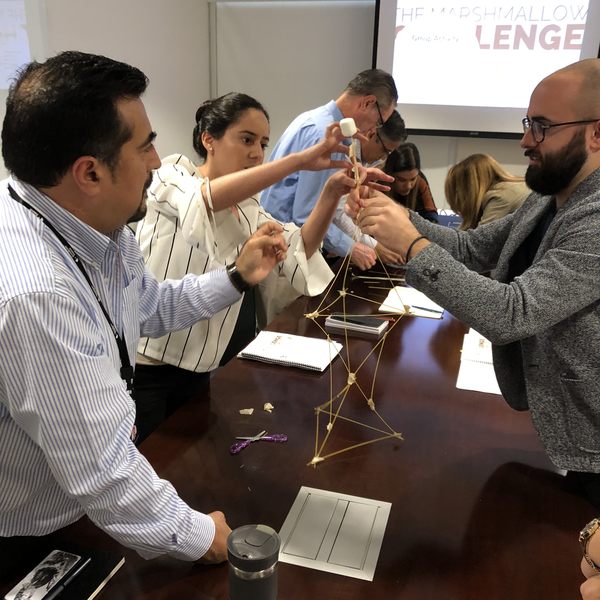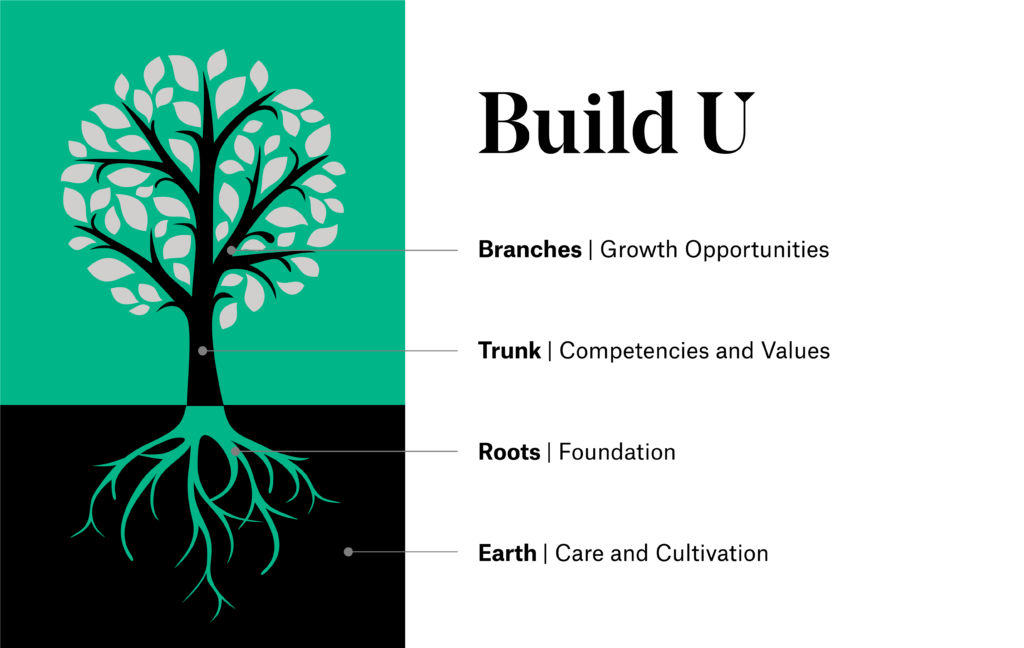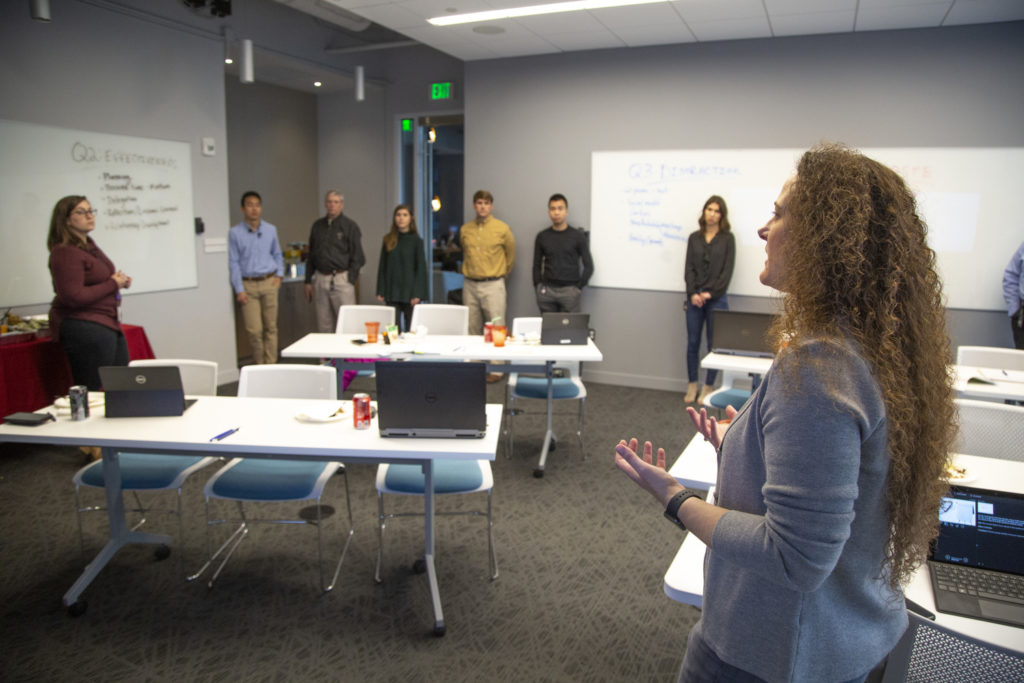When I reflect on my career, which has been a diverse one, I don’t see a linear journey but rather a weird and winding path where I fell in love with leadership and was ultimately led to Gresham Smith. And as crazy as that might sound, many people have a story that is similar to mine—a career trajectory that was anything but straightforward, and filled with twists and turns, challenges and opportunities. Although I may not have known it at the time, many of the winding roads were actually providing a fertile ground for growth.
When we think about professional growth or leadership opportunities, we tend to picture a vertical ascent up the proverbial corporate ladder, with advancement serving as the immediate objective. But that can quickly become a source of frustration when you’re waiting for opportunity to come a-knocking at your door. In this post, I explore how professional growth is more than simply ascending the corporate ladder rung by rung—it’s also about broadening who you are. And that can sometimes mean building yourself a new door.
Asking Yourself the Right Question
You’ve heard it before—the waiting is the hardest part. And while this can be frustratingly true, how we choose to spend our time during those inevitable wait times is squarely in our own hands, and can ultimately define our career.
In Stephen King’s On Writing: A Memoir of the Craft, he cites reading as one of the most important things a person can do to develop their writing skills and suggests looking for every opportunity to do so during personal downtime—whether it’s reading a book on a treadmill or while waiting in a long checkout line at the grocery store. A similar thing can be said of those wait times in our careers.
If you have ever asked yourself: How can I possibly move up the ladder unless (fill in the blank) retires or gets a promotion? I’d like to suggest you’re asking yourself the wrong question. Instead, try asking this: How can I prepare myself so I’m ready when the right opportunity does come around? Based on my own experience, and through observing some of my colleagues’ careers, the answer is pretty simple—keep growing. This shift in thinking can result in some amazing and unexpected outcomes. That next opportunity might come from a place you would have never expected.
Embracing the Growing Pains
Continuing to grow despite circumstances that don’t appear to be in our favor not only requires resiliency, it often involves taking a risk. And that sometimes means feeling a little uncomfortable in the short term as we stretch ourselves beyond our comfort zone. I was reminded of this recently when I read an excerpt from a keynote speech delivered by IBM CEO Ginni Rometty. Once a systems engineer at IBM in 1981, Rometty rose through the leadership ranks to become CEO of the company in 2012. “Accept risk, aim big, and never let anyone else tell you what’s possible,” advised Rometty at the Grace Hopper Celebration for Women in Computing.
During the speech, she shared a story from early in her career, of when her manager pegged her for a promotion but she hesitated as she thought she needed more time to get ready. Although she accepted the job the next day, she said she didn’t feel prepared. “I learned that growth and comfort never coexist,” said Rometty. “It’s the same for people, countries and companies. Ask yourself when you learned the most. I guarantee it’s when you felt at risk.”
“I learned that growth and comfort never coexist.”
– Ginni Rometty, CEO, IBM
Taking the Wheel
Take ownership of your career! You’ve probably heard that before, too. But what does taking ownership of your career actually look like? If you don’t know where to begin, a good starting place is finding—or rekindling—your passion. Figure out what you truly enjoy doing and then place your focus on that. If you don’t have the skill sets commensurate with that goal, start honing them! That might involve training, both formal and informal, attending conferences and networking with industry peers, or even professional mentorship.
The good news is, growth is a continuous process and there are many ways in which you can grow. For example, research shows that 70 to 80 percent of what people learn is through on-the-job experience and exposure—that’s a huge piece of how you can grow and prepare yourself for opportunity.
One of the ways we support professional growth at Gresham Smith is through Build U—a framework that communicates various opportunities for growth at the firm in which we offer learning content and activities designed to build skills, knowledge and experience. The impetus for establishing Build U was simple. We wanted to create an atmosphere that influences attitudes toward continual growth and transforms thinking from “advancement equals growth” to “growth prepares for advancement.”
 |
 |
 |
|
Ultimately, be intentional about your professional growth. Talk with your supervisor about your growth and development aspirations and come to the table with any information you feel supports that development discussion. It’s important to get their buy-in.
Keep in mind that people leaders are human, too. Some supervisors are going to know exactly how to support you while others might not be as well-equipped. And since growing in your career is really important to you, you can’t let the latter be a reason to stall. Look for someone else to talk to. Perhaps your firm has an employee advocate or HR business partner. If so, reach out to them for advice on developing your professional growth plan.
When Growth Meets Opportunity
Finally, it’s worth noting that you have to expect roadblocks at times. Perhaps time off to attend a conference might not be feasible because you’re on a project deadline, or the person you’ve asked to mentor you might not be available. But I encourage you, as we encourage our own employees, to never give up. A detour can often be a sign that an opportunity wasn’t meant for you at that time, but yours is coming.
And if you keep growing, you’ll be ready for it!